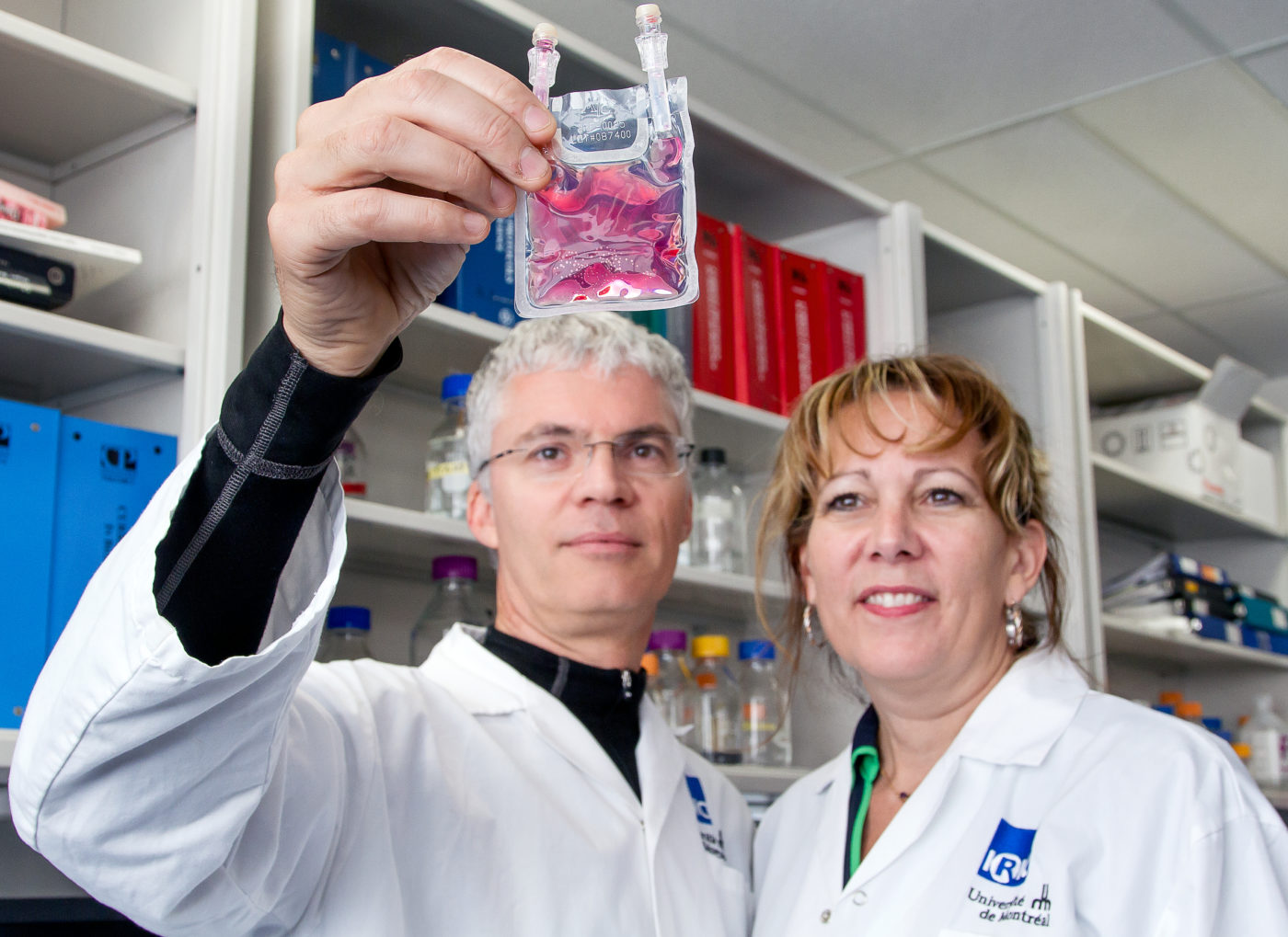News
The new molecule UM171 for treating blood cancer selected as a discovery of the year by Québec Science
Published on January 5, 2015
A major event in the field of scientific research on a national and international scale, the discovery of the new molecule UM171 for treating a number of blood-related illnesses, including leukemia, myeloma and lymphoma, by the Montreal-based team of Dr. Guy Sauvageau was selected as one of the discoveries of the year for 2014 by the scientific news and developments magazine Québec Science.
The advance was made at the Institute for Research in Immunology and Cancer (IRIC) of the Université de Montréal, where Dr. Sauvageau heads the Molecular Genetics of Stem Cells research unit. As has been the tradition for 22 years now, a jury of researchers and science journalists was responsible for determining the composition of the prestigious listing, which brings together the 10 most remarkable advances by Quebec researchers or institutions. Dr. Guy Sauvageau has also been named La Presse’s 2014 Personality of the Year in the Science category.
A molecule gifted with remarkable potential
The molecule UM171, so named in honor of the Université de Montréal, constitutes an unprecedented breakthrough with its capacity to multiply the stem cells present in umbilical cord blood. Stem cells taken from the umbilical cord are used for transplants aimed at curing a number of blood-related illnesses, including leukemia, lymphoma and myeloma. This therapy comprises a treatment of last resort for a great many patients. Human clinical trials are currently in their early stages, and the probability of success is excellent.
The result of teamwork and close collaborations
Discovery of the molecule UM171 is the result of true teamwork on the part of researchers in the different IRIC Units. The department of medicinal chemistry (Anne Marinier, Réjean Ruel, Yves Gareau, Stéphane Gingras) and the screening platform, led by Jean Duchaîne, played an important role in the success of this project, not forgetting Iman Farès and Jalila Chagraoui, who collaborated on writing the original study. The research overall benefited greatly from collaborations with such institutions as the Centre of Excellence for Cellular Therapy at the Maisonneuve-Rosemont Hospital, the British Columbia Cancer Agency, the Ontario Cancer Institute, the Fred Hutchinson Cancer Research Center and Héma-Québec, as well as IRIC’s own research commercialization Unit.
